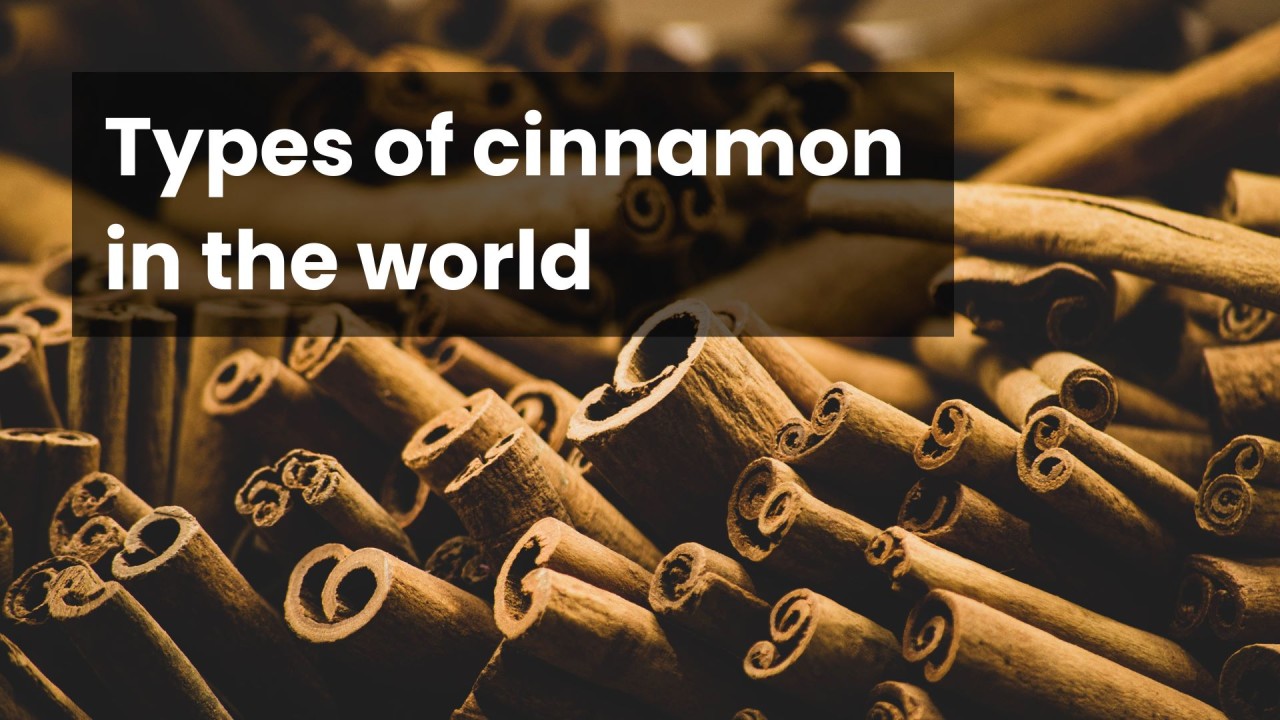Cinnamon is an important spice in many cuisines around the world, especially in Indian cuisine. It is also used in medicinal and cosmetic products, with great health benefits.
Did you know that there are different types of cinnamon around the world?
There are various types of cinnamon, but the most commonly used ones are Ceylon cinnamon, Chinese cassia cinnamon, Vietnamese cinnamon, and Indonesian cinnamon.

Ceylon Cinnamon:
Ceylon cinnamon has a unique flavor, soft and layered texture, making it most different from other types of cassia cinnamon.
Ceylon cinnamon has a gentle, delicate aroma and sweet taste, low coumarin content, and is safe for health, so it is the perfect choice in many dishes. The only thing that makes them not as popular as cassia cinnamon is their expensive price.
Ceylon cinnamon originates in Sri Lanka. This is also the place that supplies about 90% of Ceylon cinnamon worldwide.

Cassia Cinnamon:
Cassia cinnamon has a hard texture, with a single layer. Varieties of cassia cinnamon have a similar texture and only slight differences in flavor, due to different essential oil content. The 3 most popular types of cassia cinnamon are: Chinese cinnamon, Vietnamese cinnamon and Indonesian cinnamon.
Chinese cinnamon has a spicy, sometimes bitter taste and a strong aroma. Chinese cinnamon is commonly used as a flavoring and medicinal ingredient in traditional Eastern medicine. This is also the cheapest type of cassia cinnamon on the market.
Indonesian cinnamon (also known as korintje cinnamon) has a spicy flavor and a slightly higher price than Chinese cinnamon. Often used as a spice in cooking.
Vietnamese cinnamon is the type of cinnamon with the highest price among all types of cassia cinnamon (however, the price difference between different types of cassia cinnamon is not much). This is also the type of cinnamon with the highest essential oil content, so it has a strong sweet and spicy flavor. Vietnamese cinnamon is suitable for cooking, extracting essential oils and as raw materials in the food, pharmaceutical and cosmetic industries.

What is coumarin in cinnamon?
Coumarin is an organic compound found in all types of cinnamon, it is usually proportional to the essential oil content in that type of cinnamon. If used in reasonable doses, coumarin has many health benefits such as preventing cancer, heart attack, stroke, diabetes, anti-oxidation,… However, if used too much, coumarin will Becomes a toxic substance that is dangerous to the liver and kidneys, causes miscarriage or affects the fetus.
Ceylon cinnamon is a type of cinnamon with very low coumarin content and is the safest of all cinnamon types. With cassia cinnamon, you should not use more than 1.5 teaspoons per day.
Cinnamon consumption market in the world:
Most European countries use ceylon cinnamon for cooking. Because this was the first spice European explorers (Portuguese, Dutch and British) brought back from their conquests in Ceylon (Sri Lanka) 400 years ago. However, cheaper types of cassia cinnamon have gradually become a reasonable alternative in recent years.
About 70% of the population of North America and most Asian countries prefer cassia cinnamon with a much stronger flavor but cheaper price.
Vietnamese cassia cinnamon:
Vietnamese cinnamon trees are grown mainly in Thanh Hoa, Nghe An, Yen Bai and Lao Cai. Among them, Yen Bai is the growing area with the largest area and produces the best quality products.
In Yen Bai, cinnamon bark is usually harvested in March and August every year, after the rainy season ends. One to two months after the beginning of the harvest season is when the market is most vibrant, after the cinnamon bark has been dried and processed. This is also the best buying time for international importers to get new, quality products at reasonable prices.
Orgafruits VN is a cassia cinnamon supplier in Vietnam. With raw materials selected directly from farmers in the highest quality cinnamon areas, with traditional growing methods that do not use plant protection chemicals and herbicides, safe for users.
